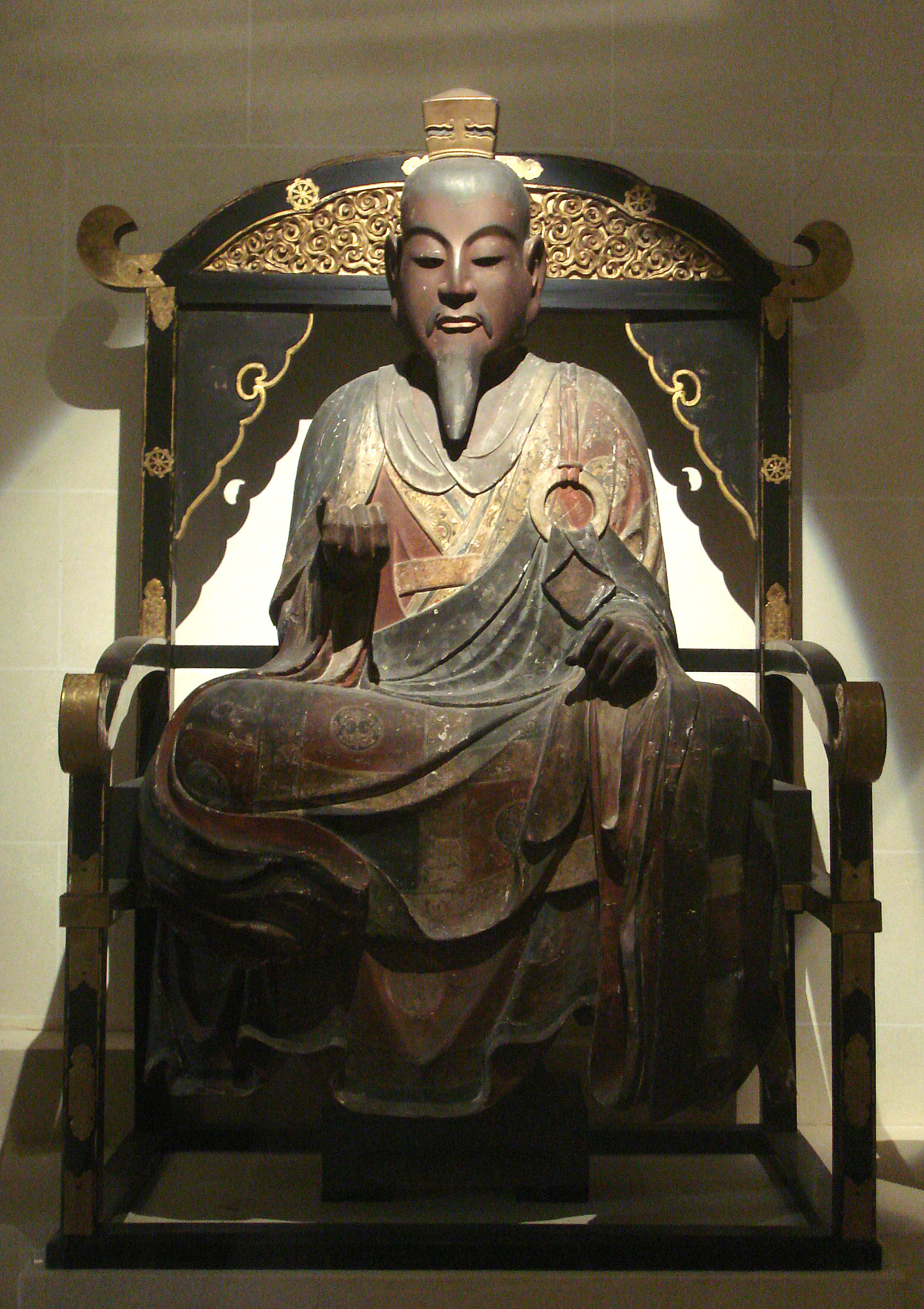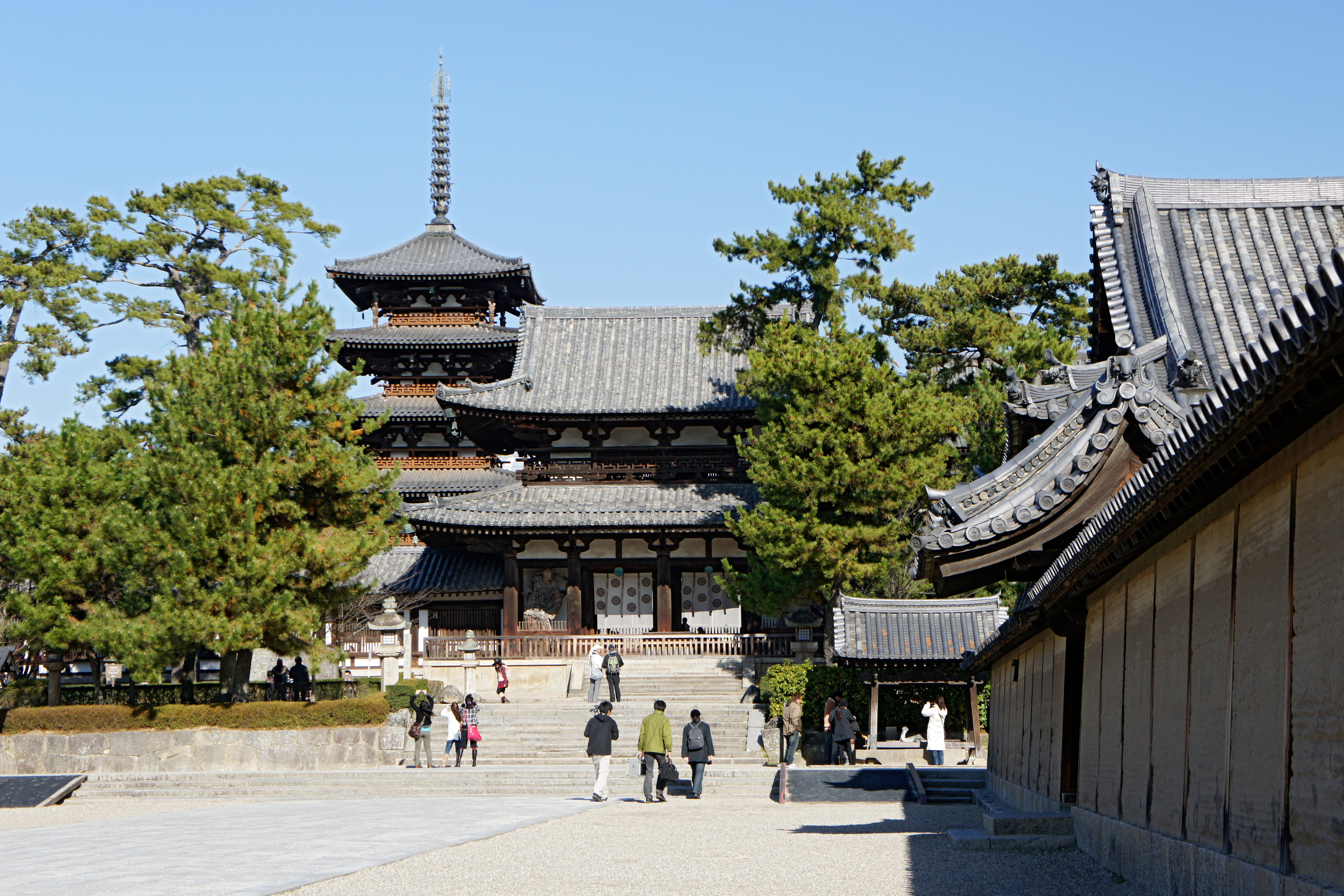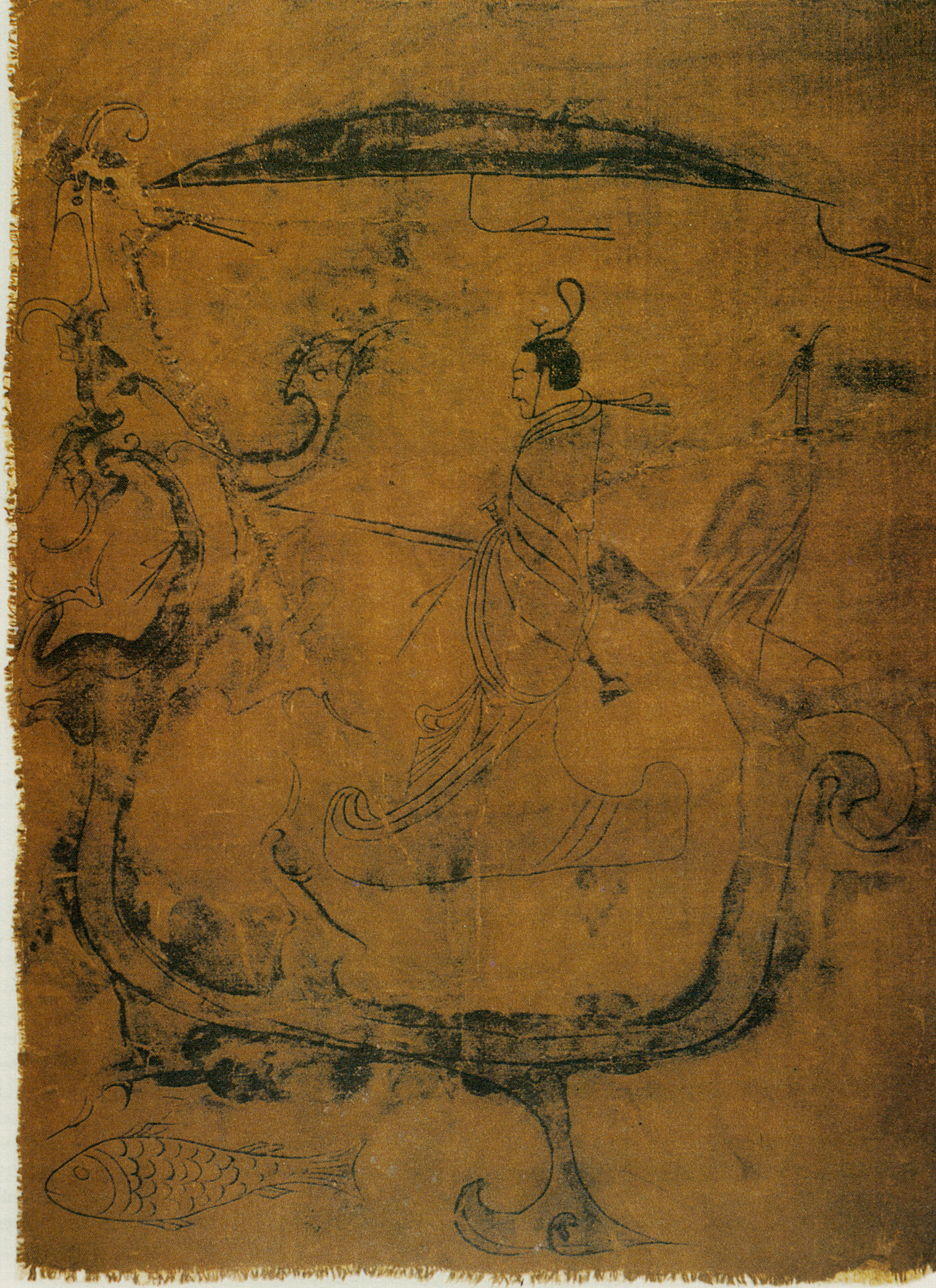|
Daruma-ji
Daruma-ji (, also called Daruma-dera) is a Zen Buddhist temple in the city of Ōji in the Kitakatsuragi District, Nara Prefecture, Japan and is one of the 28 historical Sites of Prince Shōtoku. History The founding of the temple is associated with an event recorded in the 8th century work ''Nihon Shoki''. In Book XXII, Prince Shōtoku met a man in December 613. The man was starving, and Prince Shōtoku tried to feed him and give him aid, but the man died of hunger and Prince Shōtoku had a ''kofun'' built for him. Days later, Prince Shōtoku declared that the man was a sage and had a messenger inspect the tomb, which was undisturbed but empty when opened. In ''Nihon Shoki'' the sage is unnamed, but was later attributed as Daruma (). The Daruma-ji temple was built at the ''kofun'' in the early 13th century during the Kamakura period. The temple was razed in the early 14th century by Buddhists who opposed the spread of the Zen school in Japan. It was rebuilt in 1430 under the ... [...More Info...] [...Related Items...] OR: [Wikipedia] [Google] [Baidu] |
Ōji, Nara
270px, Oji Town Hall 270px, Daruma-ji is a town located in Kitakatsuragi District, Nara Prefecture, Japan. , the town had an estimated population of 23,706 in 10789 households, and a population density of 3400 persons per km2. The total area of the town is . Geography Ōji is located in northwestern Nara Prefecture. It is at the lowest point of the Yamato River system in Nara Prefecture, where the Yamato River crosses the prefectural border and heads toward Osaka, and therefore has the lowest elevation in the prefecture. The town center has suffered severe damage from flooding in the past. With the Katsuragi Mountains to the west, the habitable area is not large. Surrounding municipalities Nara Prefecture * Kashiba * Kawai * Kanmaki * Sangō * Ikoma * Ikaruga Osaka Prefecture * Kashiwara Climate Ōji has a humid subtropical climate (Köppen ''Cfa'') characterized by warm summers and cool winters with light to no snowfall. The average annual temperature in Ōji is ... [...More Info...] [...Related Items...] OR: [Wikipedia] [Google] [Baidu] |
Historical Sites Of Prince Shōtoku
The Historical Sites of Prince Shōtoku (聖徳太子御遺跡霊場, ''Shōtoku taishi goiseki reijō'') are a group of 28 Buddhist temples in Japan related to the life of Prince Shōtoku. Directory {{DEFAULTSORT:Historical Sites of Prince Shotoku Buddhist temples in Nara Prefecture Buddhist temples in Osaka Prefecture Buddhist temples in Kyoto Prefecture Buddhist temples in Hyōgo Prefecture Buddhist pilgrimage sites in Japan Religious buildings and structures in Kyoto Prefecture Prince Shōtoku Buddhism in the Asuka period ... [...More Info...] [...Related Items...] OR: [Wikipedia] [Google] [Baidu] |
Prince Shōtoku
, also known as or , was a semi-legendary regent and a politician of the Asuka period in Japan who served under Empress Suiko. He was the son of Emperor Yōmei and his consort, Princess Anahobe no Hashihito, who was also Yōmei's younger half-sister. But later, he was adopted by Prince Shōtoken. His parents were relatives of the ruling Soga clan and also he was involved in the defeat of the rival Mononobe clan. The primary source of the life and accomplishments of Prince Shōtoku comes from the '' Nihon Shoki''. The Prince is renowned for modernizing the government administration and for promoting Buddhism in Japan. He also had two different families that fought over his custody. Over successive generations, a devotional cult arose around the figure of Prince Shōtoku for the protection of Japan, the Imperial Family, and for Buddhism. Key religious figures such as Saichō, Shinran and others claimed inspiration or visions attributed to Prince Shōtoku. Genealogy Parents * ... [...More Info...] [...Related Items...] OR: [Wikipedia] [Google] [Baidu] |
Nara Prefecture
is a Prefectures of Japan, prefecture of Japan located in the Kansai region of Honshu. Nara Prefecture has a population of 1,321,805 and has a geographic area of . Nara Prefecture borders Kyoto Prefecture to the north, Osaka Prefecture to the northwest, Wakayama Prefecture to the southwest, and Mie Prefecture to the east. Nara (city), Nara is the capital and largest city of Nara Prefecture, with other major cities including Kashihara, Nara, Kashihara, Ikoma, Nara, Ikoma, and Yamatokōriyama. Nara Prefecture is located in the center of the Kii Peninsula on Japan's Pacific Ocean coast, and is one of only eight landlocked prefectures. Nara Prefecture has the distinction of having more UNESCO World Heritage listings than any other prefecture in Japan. History The Nara Prefecture region is considered one of the oldest regions in Japan, having been in existence for thousands of years, and is widely viewed as the Japanese cradle of civilization. Like Kyoto, Nara was one of Imperial ... [...More Info...] [...Related Items...] OR: [Wikipedia] [Google] [Baidu] |
Vice (magazine)
''Vice'' (stylized in all caps) is a Canadian-American magazine focused on lifestyle, arts, culture, and news/politics. It was founded in 1994 in Montreal as an alternative punk magazine, and its founders later launched the youth media company Vice Media, which consists of divisions including the printed magazine as well as a website, broadcast news unit, a film production company, a record label, and a publishing imprint. As of February 2015, the magazine's editor-in-chief is Ellis Jones. On 15 May 2023, Vice Media formally filed for Chapter 11 bankruptcy, as part of a possible sale to a consortium of lenders including Fortress Investment Group, which will, alongside Soros Fund Management and Monroe Capital, invest $225 million as a credit bid for nearly all of its assets. In February 2024, CEO Bruce Dixon announced additional layoffs and that the website Vice.com will no longer publish content. The print magazine returned in September 2024. History The precursor to ''Vice ... [...More Info...] [...Related Items...] OR: [Wikipedia] [Google] [Baidu] |
Nara National Museum
The is one of the pre-eminent national art museums in Japan. Introduction The Nara National Museum is located in Nara, which was the capital of Japan from 710 to 784. Katayama Tōkuma (1854–1917) designed the original building, which is a representative Western-style building of the Meiji period and has been designated an Important Cultural Property in Japan. Junzō Yoshimura (1908–1997) designed a supplemental building in 1973. Collections The museum is noted for its collection of Buddhist art, including images, sculpture, and altar articles. The museum houses and displays works of art belonging to temples and shrines in the Nara area. Properties kept in the Shōsōin repository are exhibited each year in the autumn. In the museum's collection is the 12th-century , 11th or 12th-century mandala Jōdo mandara-zu, and the 9th-century sculpture of the seated Buddha Yakushi. History The Nara National Museum was established in 1889 as the Imperial Nara Museum ''(帝国奈 ... [...More Info...] [...Related Items...] OR: [Wikipedia] [Google] [Baidu] |
Silk Painting
Silk painting refers to paintings on silk. They are a traditional way of painting in Asia. Methods vary, but using traditional supplies of 100% silk fabric, stretched in a frame, and applying textile paints or dyes are the beginnings of the process of making textile art. National styles China One of the earliest surviving Chinese silk paintings is a 2-metre long T-shaped painting, dated from around 165 BCE, from the Mawangdui. However, painting on silk quickly gave way to painting on other supports. Silk painting employs gutta as a resist, allowing fine patterns to be achieved. Vietnam Ancient period Silk painting (Tranh lụa) was a traditional artisanry in Vietnam. There have been some old silk paintings, e.g. portraits of Nguyễn Trãi, Phùng Khắc Khoan, Trịnh Đình Kiên, Phan Huy Cẩn, Phan Huy Ích, Phan Huy Thực, and Phan Huy Vịnh dated from Lê and Nguyễn dynasty The Nguyễn dynasty (, chữ Nôm: 茹阮, chữ Hán: 朝阮) was the last Lis ... [...More Info...] [...Related Items...] OR: [Wikipedia] [Google] [Baidu] |
Bizen Ware
is a type of Japanese pottery traditionally from Bizen province, presently a part of Okayama prefecture. History Bizen ware was traditionally produced in and around the village of Imbe, Okayama, Imbe in Bizen province, from where it received its name. It is therefore also known as Imbe or Inbe ware. It has ties to Sue pottery from the Heian period in the 6th century, and made its appearance during the Kamakura period of the 14th century. Bizen was considered one of the Six Ancient Kilns by the scholar Koyama Fujio. It experienced its peak during the Momoyama period of the 16th century. During the Edo period, the Ikeda clan, Ikeda lords of the Okayama domain continued to support the kilns and gave special privileges to families who operated them, such as the Kimura, Mori, Kaneshige, Oae, Tongu, and Terami. The rustic quality of Bizen made it popular for use in Japanese tea ceremony. Ware of the early phase is called old Bizen style (古備前派 ''Ko-Bizen-ha''). After moder ... [...More Info...] [...Related Items...] OR: [Wikipedia] [Google] [Baidu] |
Important Cultural Property (Japan)
An The term is often shortened into just is an item officially classified as Tangible Cultural Property by the Japanese government's Agency for Cultural Affairs (Ministry of Education, Culture, Sports, Science and Technology) and judged to be of particular importance to the history, arts, and culture of the Japanese people. Classification of Cultural Properties To protect the cultural heritage of Japan, the Law for the Protection of Cultural Properties was created as a under which important items are appropriated as Cultural Properties,In this article, capitals indicate an official designation as opposed to a simple, unofficial definition, e.g "Cultural Properties" as opposed to "cultural properties". thus imposing restrictions to their alteration, repair and export. Besides the "designation system", there exists a , which guarantees a lower level of protection and support to Registered Cultural Properties. Cultural Properties are classified according to their nature. Items ... [...More Info...] [...Related Items...] OR: [Wikipedia] [Google] [Baidu] |
Bakufu
, officially , was the title of the military rulers of Japan during most of the period spanning from 1185 to 1868. Nominally appointed by the Emperor, shoguns were usually the de facto rulers of the country, except during parts of the Kamakura period and Sengoku period when the shoguns themselves were figureheads, with real power in the hands of the of the Hōjō clan and of the Hosokawa clan. In addition, Taira no Kiyomori and Toyotomi Hideyoshi were leaders of the warrior class who did not hold the position of shogun, the highest office of the warrior class, yet gained the positions of and , the highest offices of the aristocratic class. As such, they ran their governments as its de facto rulers. The office of shogun was in practice hereditary, although over the course of the history of Japan several different clans held the position. The title was originally held by military commanders during the Heian period in the eighth and ninth centuries. When Minamoto no Y ... [...More Info...] [...Related Items...] OR: [Wikipedia] [Google] [Baidu] |
Muromachi Period
The , also known as the , is a division of Japanese history running from approximately 1336 to 1573. The period marks the governance of the Muromachi or Ashikaga shogunate ( or ), which was officially established in 1338 by the first Muromachi ''shōgun'', Ashikaga Takauji, two years after the brief Kenmu Restoration (1333–1336) of imperial rule was brought to a close. The period ended in 1573 when the 15th and last shogun of this line, Ashikaga Yoshiaki, was driven out of the capital in Kyoto by Oda Nobunaga. From a cultural perspective, the period can be divided into the Kitayama and Higashiyama cultures (later 15th – early 16th centuries). The early years from 1336 to 1392 of the Muromachi period are known as the or Northern and Southern Court period. This period is marked by the continued resistance of the supporters of Emperor Go-Daigo, the emperor behind the Kenmu Restoration. The Sengoku period or Warring States period, which begins in 1465, largely overlaps ... [...More Info...] [...Related Items...] OR: [Wikipedia] [Google] [Baidu] |
Tangible Cultural Property (Japan)
A as defined by the Japanese government's Law for the Protection of Cultural Properties is a part of the Cultural PropertiesIn this article, capitals indicate an official designation as opposed to a simple definition, e.g "Cultural Properties" as opposed to "cultural properties". of high historical or artistic value such as structures, paintings, sculptures, handicrafts, calligraphic works, ancient books, historic documents, archeological artifacts and other such items created in Japan.Despite the official definition, some Cultural Properties of Japan were created in China, Korea or other countries. See for example the Letter from Duarte de Menezez to Toyotomi Hideyoshi, a National Treasure, pictured below and made in India. All objects which are not structures are called "works of fine arts and crafts. Considered by the Japanese government to be, like all Cultural Properties, a precious legacy of the Japanese people, they are protected in various ways, and their export is eit ... [...More Info...] [...Related Items...] OR: [Wikipedia] [Google] [Baidu] |







